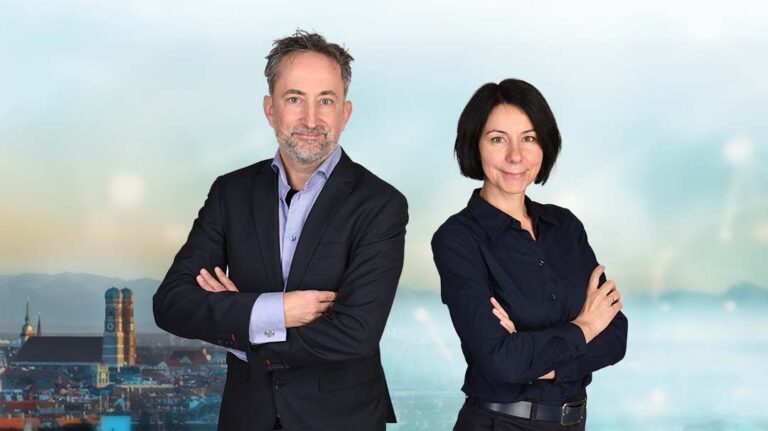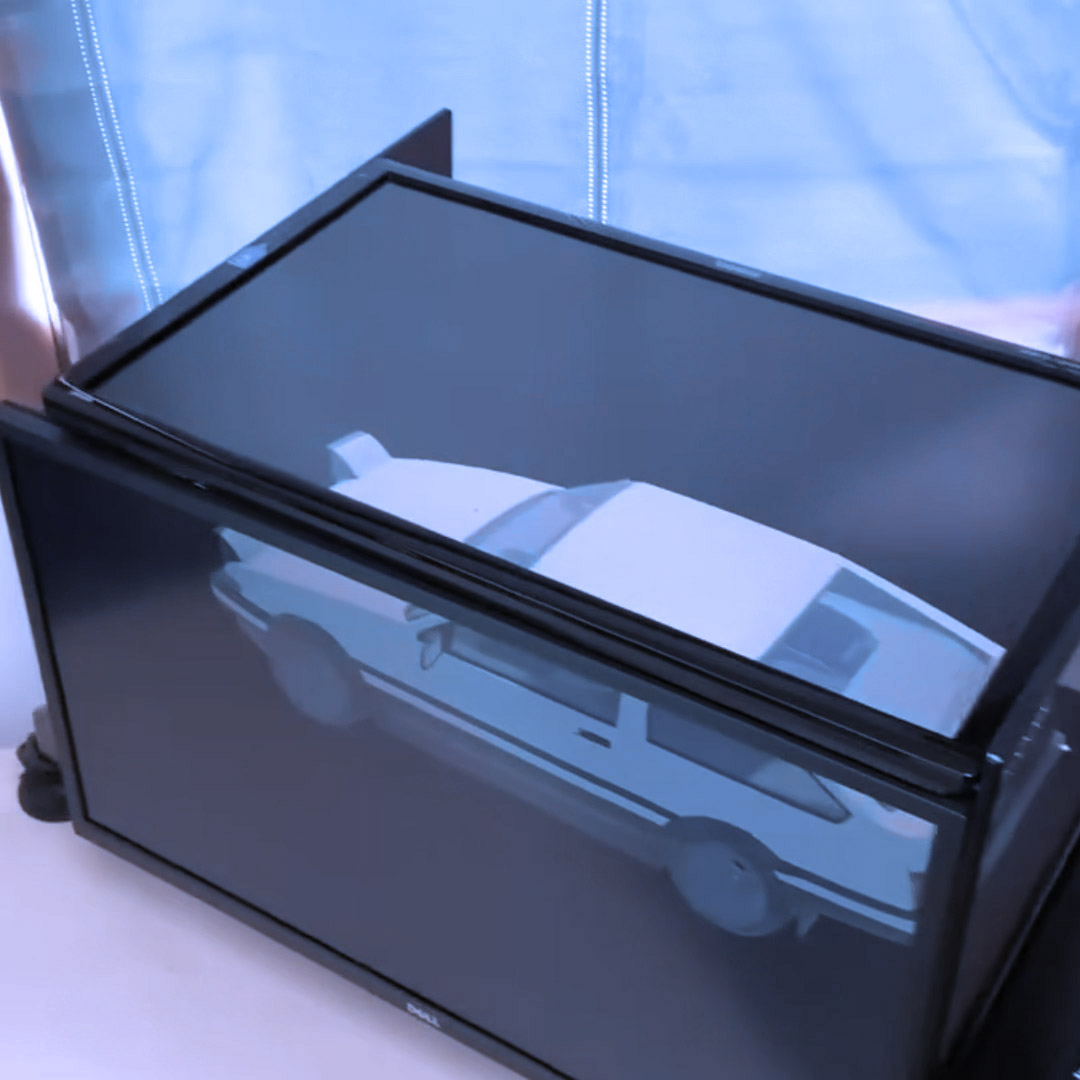Virtual Showcase in Action – 3D Visualization of a Vehicle in Real Time
Image: © Portalgraph_official
The Virtual Showcase as a Window into New Product Worlds
The virtual showcase opens up completely new possibilities to present products, concepts, and prototypes in a realistic way – without having to physically produce them. Based on state-of-the-art stereo displays, eye-tracking, and XR technologies, objects can be displayed in a kind of “digital display case” that deeply draws the viewer into the experience.
This technology is particularly exciting for industries such as automotive, mechanical engineering, or retail. Companies can stage complex models in detail and interactively guide their customers, partners, or employees even before a product exists in reality. This saves resources and significantly accelerates development and marketing processes.
- Immersive presentations with real depth perception
- Cost-efficient, since no physical models are required
- Flexibly adaptable for retail, trade fairs, and training

Setup of a virtual showcase: Stereo display and tracking technology enable the presentation of 3D content with depth effect.
Image: © Portalgraph_official
The image shows how the setup of such an installation works: With the help of special monitors and precise tracking, a realistic 3D effect is created. The technology makes it possible to display virtual objects as if they were tangible in space – an immersive bridge between digital simulation and real experience.
This approach makes the virtual showcase a forward-looking tool for marketing, engineering, and training. It is not just about making products visible but about making them experienceable – taking the crucial step from illusion to reality.
More than Just 3D Objects: Animations and Interactive Content
The strength of the virtual showcase lies not only in the representation of static 3D objects. The technology becomes particularly impressive when animations, moving scenes, or interactive content are integrated. This way, stories can be told, products shown in motion, or complex processes made understandable.
For example: In addition to a detailed vehicle model, an animated character can appear at the same time, playfully explaining the functions. This turns the virtual showcase into not only a showroom for products but also a stage for storytelling and interaction – an experience that leaves a lasting impression on visitors.
- Combination of static models and moving content
- Storytelling opportunities directly in 3D space
- A new dimension of customer engagement at trade fairs and in retail

The virtual showcase combines 3D objects with animations, creating a new level of interactivity.
Image: © Portalgraph_official
The interplay of 3D objects and animations opens up new creative possibilities for brands and companies. Whether for products that require explanation, immersive entertainment concepts, or innovative trade fair appearances – the possibilities go far beyond classic product presentations.
With this expansion, the virtual showcase becomes a true experience space where digital content appears vivid and tangible. It is therefore a key tool to capture the audience’s attention and leave lasting impressions.
More than Still Images: Animations, Interaction, and Live Content
The virtual showcase is not limited to rigid 3D objects. Its strength is revealed when moving sequences, particle effects, or interactive elements come into play. Functions, processes, and stories become immediately tangible – directly in space, without a headset.
Whether product features, safety procedures, or brand moments: Animations increase comprehensibility and extend engagement. Live data and control commands can also be visualized in real time – ideal for trade fairs, retail areas, and showrooms.
- Storytelling in space → Functions & processes become visible
- Interactive → Touch, sensors, or triggers control the scene
- Live-capable → Data streams and AI outputs in real time
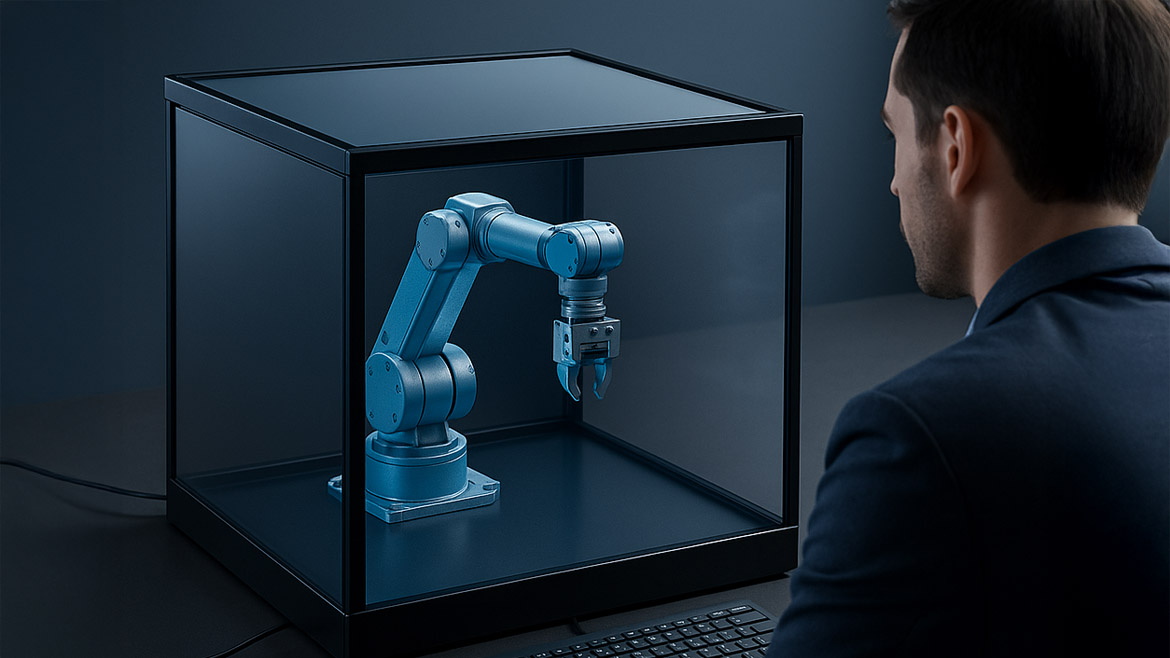
Example: A vehicle model and an animated character share the same stage – the showcase becomes a storytelling platform.
Image: © Ulrich Buckenlei I Visoric Gmbh 2025
The combination of precise 3D geometry and targeted animations creates emotional anchor points. Brands can condense complex content without losing technical depth – an advantage over classic displays or print.
With clean data preparation (CAD → real-time mesh), optimized rendering, and clear interaction concepts, a high-quality, scalable format emerges: from compact retail installations to large trade fair productions.
Technical Setup and Functionality
The core of the system consists of several precisely aligned monitor surfaces arranged in a cube-shaped frame. This configuration makes it possible to display three-dimensional objects freely in space without requiring additional devices such as headsets. The computing unit handles the generation and synchronization of the image signals.
An eye-tracking camera unit captures the user’s gaze direction and position. This allows the perspective to be dynamically adjusted, enabling realistic depth perception. This technical basis forms the foundation for applications in robotics, industry, and interactive presentation environments.
- External computing unit → Calculates and controls all image signals
- Eye-tracking camera → Adjusts the image output in real time
- Multi-sided display surfaces → Generate three-dimensional depth effect
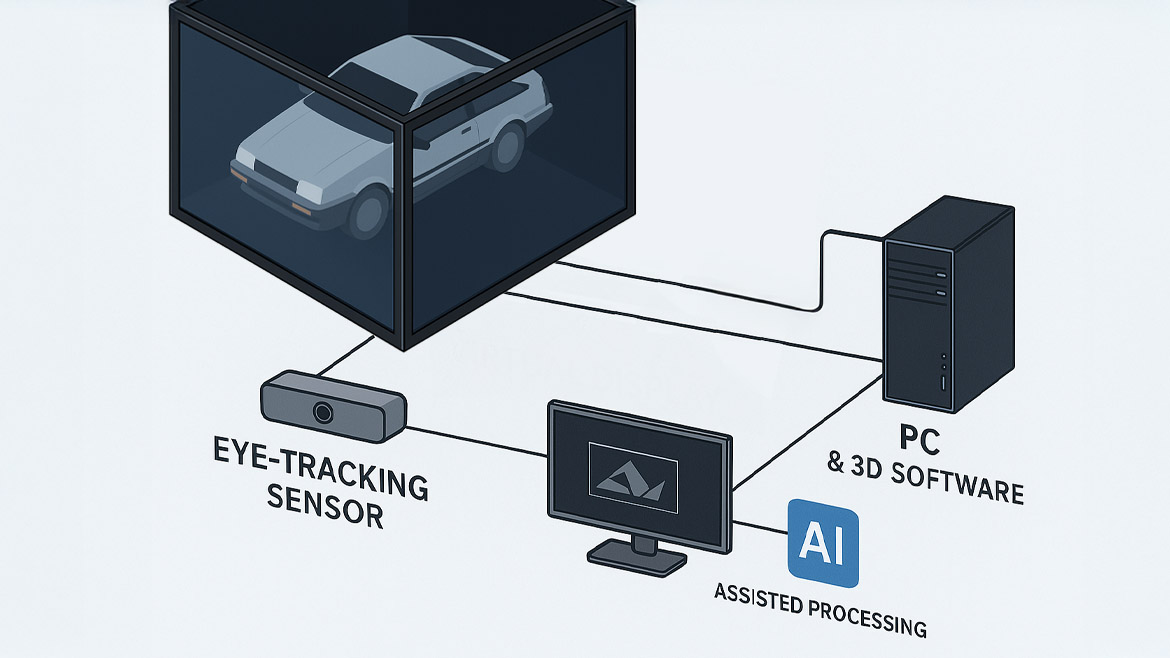
Diagram: 3D display case with external computing unit and eye-tracking system.
Image: © Ulrich Buckenlei I Visoric Gmbh 2025
Through the combination of hardware and intelligent software, an immersive system is created that can be adapted to individual scenarios. Flexibility ranges from single-user applications to initial multi-user approaches.
This technology is particularly relevant for fields where spatial vision and precise depth perception are essential, such as controlling complex machines or interactive product presentations in retail and trade fair environments.
Business Applications: Where the Virtual Showcase Creates Value
The diagram shows a radial “application map.” Each colored sector represents a typical field of use: Retail & Trade Fairs, Product Prototyping, Industrial Control & Robotics, Education & Training, as well as Marketing & Storytelling.
The arrangement makes clear: The virtual showcase is a core format that can be applied across multiple domains – from emotional brand experiences to precise, work-related applications.
The map is intentionally qualitative: It organizes fields by strategic benefit and scalability, not by exact figures. This makes it suitable as a compass for roadmaps – from initial pilots through adaptation by individual teams to scalable rollouts in retail, trade fairs, or control rooms.
- Retail & Trade Fairs: Lead generation, sales uplift, less logistics through digital exhibits
- Product Prototyping: Shorten time-to-market, save material and travel costs
- Industrial Control & Robotics: Improved depth perception, safety, and precision
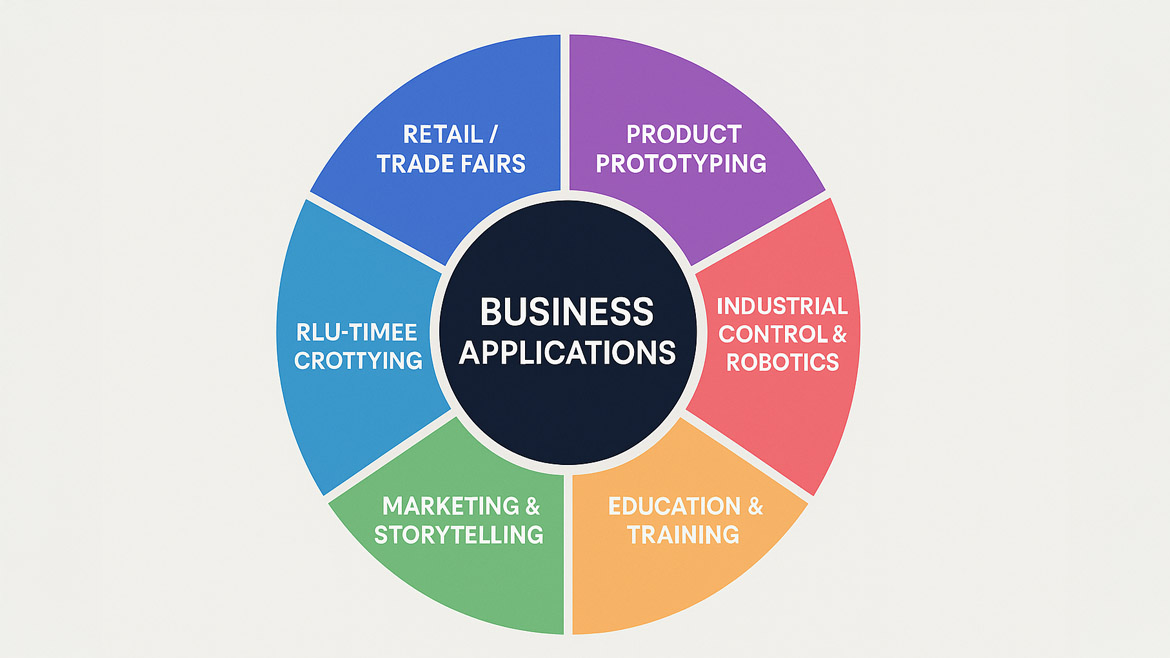
Infographic: Five core domains – Retail & Trade Fairs, Product Prototyping, Industrial Control & Robotics, Education & Training, Marketing & Storytelling.
Image: © Ulrich Buckenlei I Visoric Gmbh 2025
For planning purposes: content and data (CAD → real-time), interaction (touch/sensors/triggers), and the physical setup (display case, tracking, playback PC) are designed as reusable modules. This way, projects can start in one field (e.g., trade fair) and later be scaled to others (e.g., training or retail rollout).
Companies benefit twice: emotionally powerful presentations for customers and stakeholders – and measurable efficiency gains in development, sales, and operations. The virtual showcase thus evolves from a showpiece to a building block of digital transformation.
Technical Limitations and Initial Solutions
The current generation of stereoscopic displays impresses with remarkable depth perception but has one key limitation: it usually works for only one person at a time. The eye-tracking system calculates the perspective precisely for a single pair of eyes, but as soon as multiple viewers stand in front of the display simultaneously, rendering errors occur. This limits its use in collaborative scenarios such as control centers or medical teams.
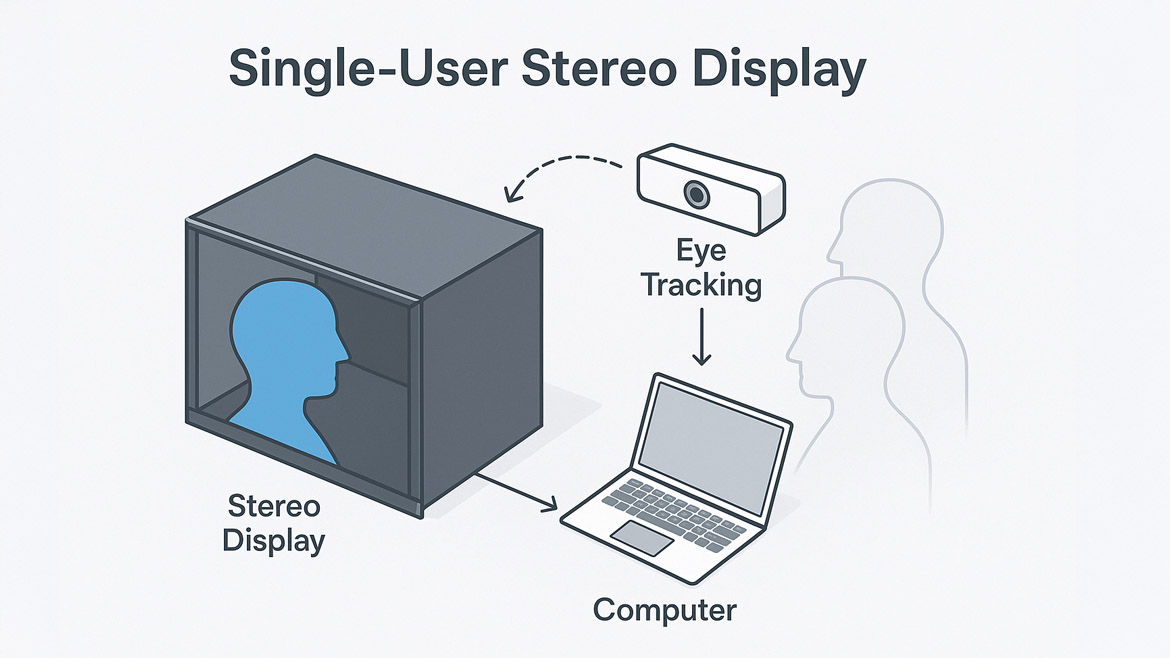
Diagram of a single-user stereo display system with eye-tracking camera
Image: © Ulrich Buckenlei I Visoric Gmbh 2025
The diagram shows the typical setup: A camera captures the viewer’s eye position, and the display engine then calculates a stereoscopic image specifically for this position. The advantage lies in the very high precision and natural depth impression, as the perspective is tailored exactly to one person. At the same time, the limitation becomes clear: as soon as a second user stands in front of the display, the calculation becomes inconsistent.
- Outstanding depth perception → perfectly tuned for a single person
- Eye-tracking camera → continuous adjustment to head and eye movement
- Key limitation → multi-user scenarios not yet feasible
The image makes it clear that this is a closed system that enables glasses-free 3D display but essentially remains a “single-user setup.” This insight is crucial for understanding the next step toward new multi-user technologies – a topic we will examine more closely in the next chapter with additional schematics.
New Technologies for Multi-User Stereo Displays
While classic stereoscopic showcases are mostly optimized for just one person, the new generation of multi-user displays opens up exciting opportunities. With innovative approaches, it is possible to present a correct 3D image to multiple viewers simultaneously. This is achieved through adaptive algorithms that detect different viewing angles and display content with slight time offsets or overlays. This allows realistic use cases such as collaborative work, training, or even medical scenarios.
The diagram illustrates how modern displays can distinguish between several pairs of eyes. Instead of showing optimal depth to just one viewer, the image output is dynamically adapted. Different positions in space are recognized, each receiving a separate signal. In some systems this is achieved with shutter glasses, while newer developments work entirely without additional hardware.
- Multi-user capability expands application areas
- Adaptive algorithms for different viewing angles
- Use in collaborative, medical, and industrial scenarios
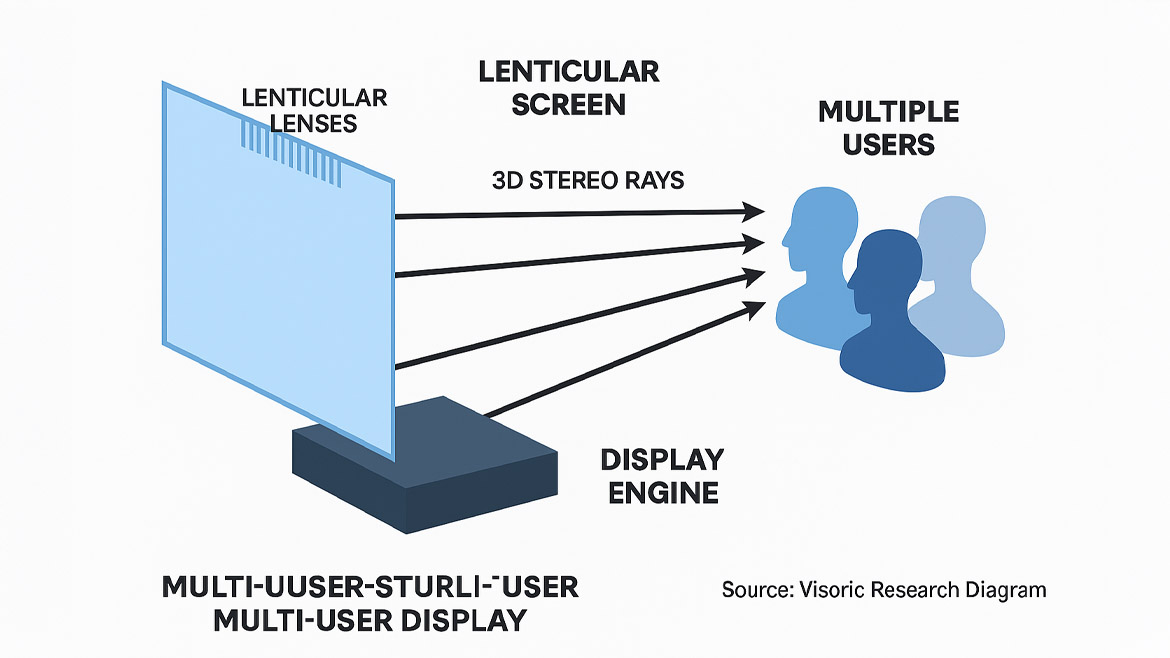
Illustration: Functionality of a multi-user stereo display
Image: © Ulrich Buckenlei I Visoric Gmbh 2025
The illustration shows schematically how multiple users can simultaneously perceive a three-dimensional image. For each pair of eyes, a separate perspective is generated and overlaid. This way, the stereoscopic experience is no longer limited to a single viewer but can be made accessible to groups. This is a decisive step forward, especially for training situations or collaborative decision-making processes.
With these developments, multi-user stereo displays are moving closer to practical use in industry, medicine, and education. The open question remains which systems will prevail in the market and how the costs of this technology will evolve.
The Virtual Showcase 4.0 in Motion
To experience the effect of the virtual showcases not just in theory but in action, we have prepared a demonstration. It shows how digital objects appear realistically inside a glass-like space and follow the viewer’s perspective changes.
Demonstration: Virtual showcase with live-rendered 3D objects
Source: Portalgraph_official
The video sequence makes the added value of this technology immediately visible: digital content appears tangible and convincing without needing to physically exist. This opens up new dimensions for product presentations, trade fairs, and collaborative design processes.
The Visoric Expert Team in Munich
Behind the technologies presented are not abstract concepts but an experienced team of specialists in immersive media, 3D visualization, and digital transformation. The Visoric expert team in Munich supports companies from the first idea to the finished implementation – individually, hands-on, and with a clear understanding of the demands of modern markets.
Whether single-user scenarios with glasses-free display or multi-user solutions with shutter glasses: our experts develop tailor-made systems that can be perfectly integrated into existing processes. We combine concept, design, programming, and technical implementation from a single source.
- Consulting & Concept → precisely tailored for retail, industry, trade fairs, and medicine
- Design & Content → high-quality 3D models, animations, and interactive processes
- Technical implementation → from hardware integration to custom eye-tracking systems
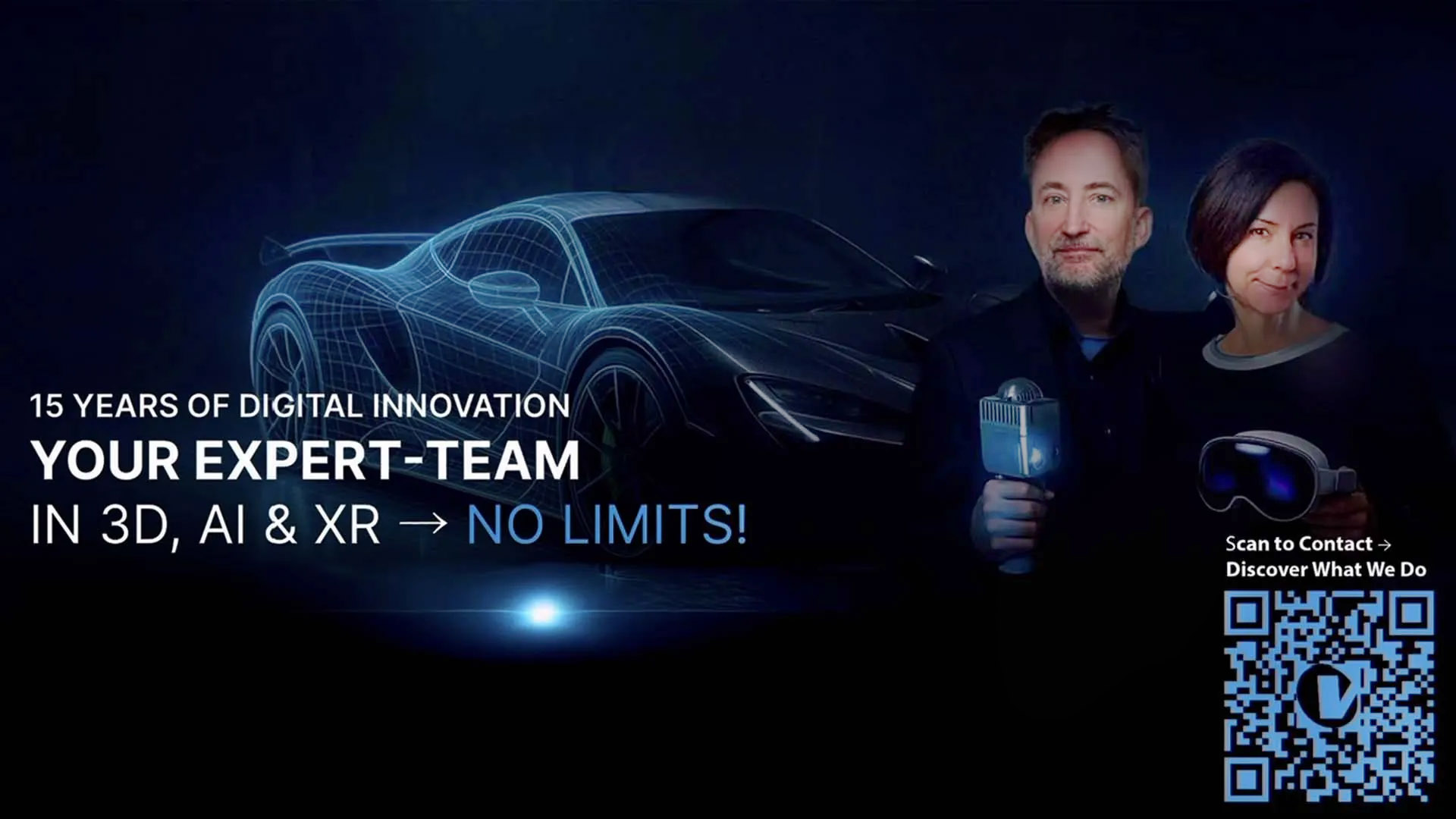
The Visoric Expert Team: Ulrich Buckenlei & Nataliya Daniltseva
Source: Visoric GmbH
Ulrich Buckenlei and Nataliya Daniltseva are the faces of the company. Together with their team, they stand for interdisciplinary expertise, innovative strength, and the ability to make digital experiences tangible. Visoric’s strength lies in not only mastering technologies but strategically using them to achieve clients’ goals.
Thus, each request becomes an individual project that not only convinces technically but also creates measurable added value for brands, products, and companies. We look forward to shaping the next generation of immersive experiences together with you.
Contact Us:
Email: info@xrstager.com
Phone: +49 89 21552678
Contact Persons:
Ulrich Buckenlei (Creative Director)
Mobil +49 152 53532871
Mail: ulrich.buckenlei@xrstager.com
Nataliya Daniltseva (Projekt Manager)
Mobil + 49 176 72805705
Mail: nataliya.daniltseva@xrstager.com
Address:
VISORIC GmbH
Bayerstraße 13
D-80335 Munich
